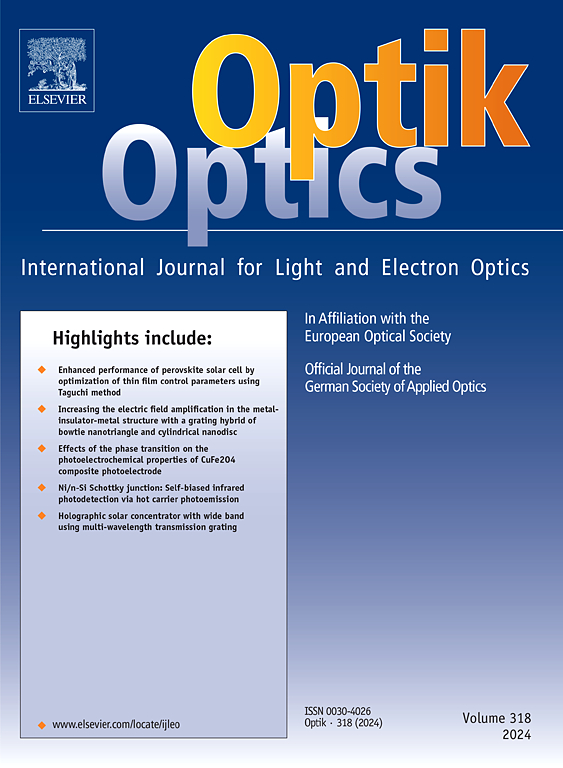New self-similar Jacobi rational and polynomial waves in inhomogeneous two-mode fibers: Exact solutions of generalized coupled NLSEs modified
IF 3.1
3区 物理与天体物理
Q2 Engineering
引用次数: 0
Abstract
We investigate self-similar periodic and solitary waves in inhomogeneous two-mode fibers governed by a generalized variable-coefficient coupled nonlinear Schrödinger system with ten independent coefficients that account for asymmetric dispersion, Kerr nonlinearities, linear gain/loss, and external potentials in each mode. A constructive similarity transformation maps the variable-coefficient equations to a constant-coefficient pair, yielding explicit relations for the similarity variables, amplitudes, and phases. On the reduced system, an F-expansion framework produces five solvable families of exact solutions classified as rational and polynomial Jacobi-type periodic waves, together with their existence constraints and dispersion relations. The Jacobi families continuously connect to localized states—bright, dark, kink/antikink, and W-shaped solitons—in the elliptic-modulus limit. Mapping back provides chirped self-similar solutions of the original inhomogeneous model. Using prototype dispersion and gain/loss profiles, we quantify pulse energy, width, and chirp to track periodic-to-soliton transitions under parameter modulation. The results substantially enlarge the known solution space for vector NLSEs beyond symmetric, few-coefficient settings and offer analytic control knobs—via the engineered coefficient landscapes—for amplitude, width, and phase, with relevance to pulse shaping and robust transmission in fiber systems.
非均匀双模光纤中新的自相似雅可比有理波和多项式波:修正广义耦合nlse的精确解
我们研究了由广义变系数耦合非线性Schrödinger系统控制的非均匀双模光纤中的自相似周期波和孤立波,该系统具有十个独立系数,可以解释每个模式中的不对称色散、克尔非线性、线性增益/损耗和外部电位。构造相似变换将变系数方程映射到常系数对,产生相似变量、振幅和相位的显式关系。在约化系统上,一个f展开框架产生了5个可解的精确解族,这些精确解族分为有理和多项式雅可比型周期波,以及它们的存在约束和色散关系。Jacobi族在椭圆模极限下连续连接到局部状态——亮、暗、扭结/反扭结和w形孤子。反向映射提供了原始非齐次模型的啁啾自相似解。利用原型色散和增益/损耗曲线,我们量化了脉冲能量、宽度和啁啾,以跟踪参数调制下周期性到孤子的转变。结果大大扩大了矢量nlse的已知解空间,超越了对称、低系数设置,并通过工程系数景观提供了振幅、宽度和相位的分析控制旋涡,与光纤系统中的脉冲整形和鲁棒传输相关。
本文章由计算机程序翻译,如有差异,请以英文原文为准。
求助全文
约1分钟内获得全文
求助全文
来源期刊

Optik
物理-光学
CiteScore
6.90
自引率
12.90%
发文量
1471
审稿时长
46 days
期刊介绍:
Optik publishes articles on all subjects related to light and electron optics and offers a survey on the state of research and technical development within the following fields:
Optics:
-Optics design, geometrical and beam optics, wave optics-
Optical and micro-optical components, diffractive optics, devices and systems-
Photoelectric and optoelectronic devices-
Optical properties of materials, nonlinear optics, wave propagation and transmission in homogeneous and inhomogeneous materials-
Information optics, image formation and processing, holographic techniques, microscopes and spectrometer techniques, and image analysis-
Optical testing and measuring techniques-
Optical communication and computing-
Physiological optics-
As well as other related topics.
 求助内容:
求助内容: 应助结果提醒方式:
应助结果提醒方式:


